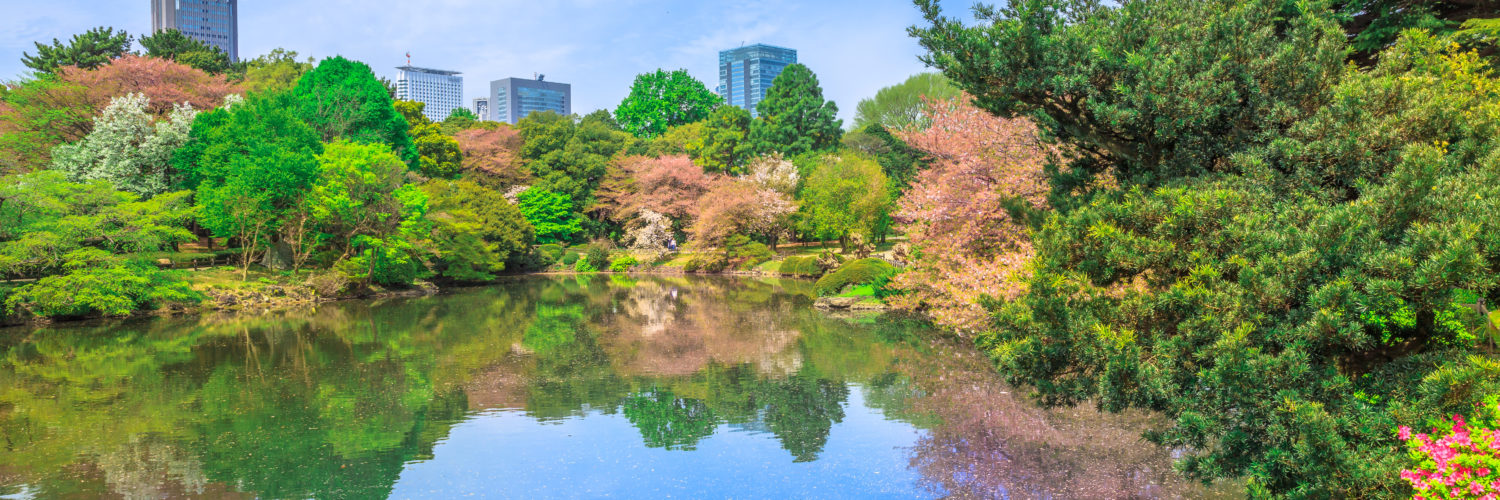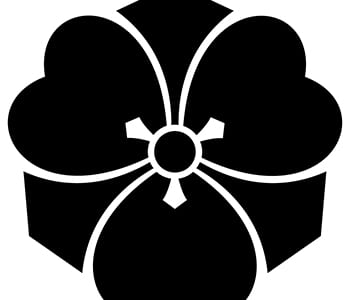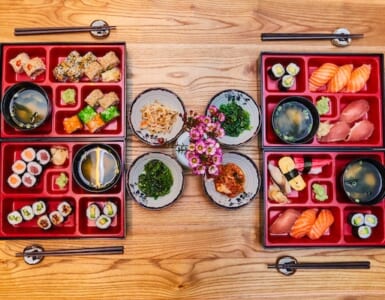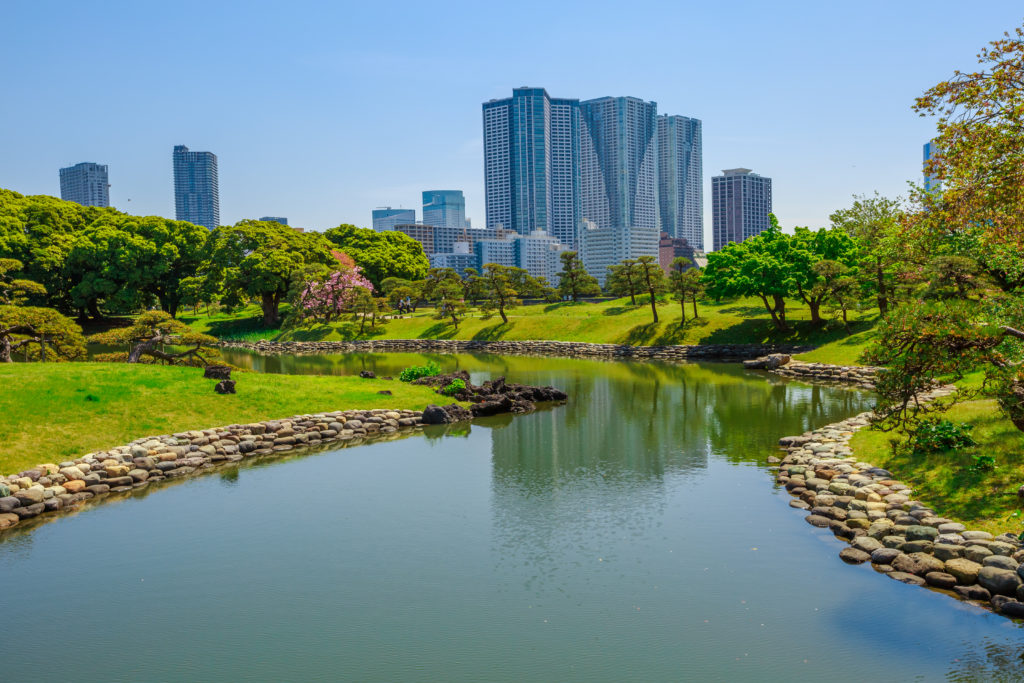
Do you want to create a Japanese style garden? Japanese garden has a unique set of compositions, which makes us feel still and calm. What is it about them? Understanding the basics, its design principles and elements help you greatly to create your own Japanese garden.
Origin and Brief History of Japanese Garden
A long time ago, people lived with nature feeling a much stronger bond with it while feeling awe for it at the same time. As ancient Shinto indicates, people had a tremendous amount of respect for the large rocks, stones, and mountains.
People believed kami (deities) reside in those rocks, stones, and they created the visible boundary by setting up the stone to protect the area as a sacred space, which will turn into Shinto shrines later.
In the meantime, as people benefited from the sea, they assumed certain islands as a sacred spot for worshipping kami (deities).
These facts are considered to be the origin of the Japanese garden.
Although Japan adopted other cultures in the course of time, the Japanese garden keeps its uniqueness to this day.
Influence of Chinese Garden – Japanese Garden
In the ancient Chinese folk belief in immortals, it’s believed there were four legendary wizards living on each different island. It became the foundation of Taoism and the origin of folklore and myths.
They began creating gardens imitating this idea, which was exported to Japan in the Asuka period in the 6th to 7th centuries.
Full-scale Japanese Garden Projects
We can see the influence on the remains of the pond garden in the Asuka Capital site. Ever since people began working on the full-scale Japanese garden projects.
The garden site which was found in Asuka-mura, Nara Prefecture is thought to be the Imperial garden of Asuka Capital and considered to be Japan’s oldest garden site.
Types of the Traditional Japanese Gardens
Just as we mentioned the influence of other cultures, people created many types of Japanese gardens, along with the development of varieties of architectural styles.
Japanese Architecture: Overview of Wide Varieties of Buildings in History
They tell us where their interests and thoughts were. We will take a look at them in the chronological order.
Winding Stream Garden – Japanese Garden
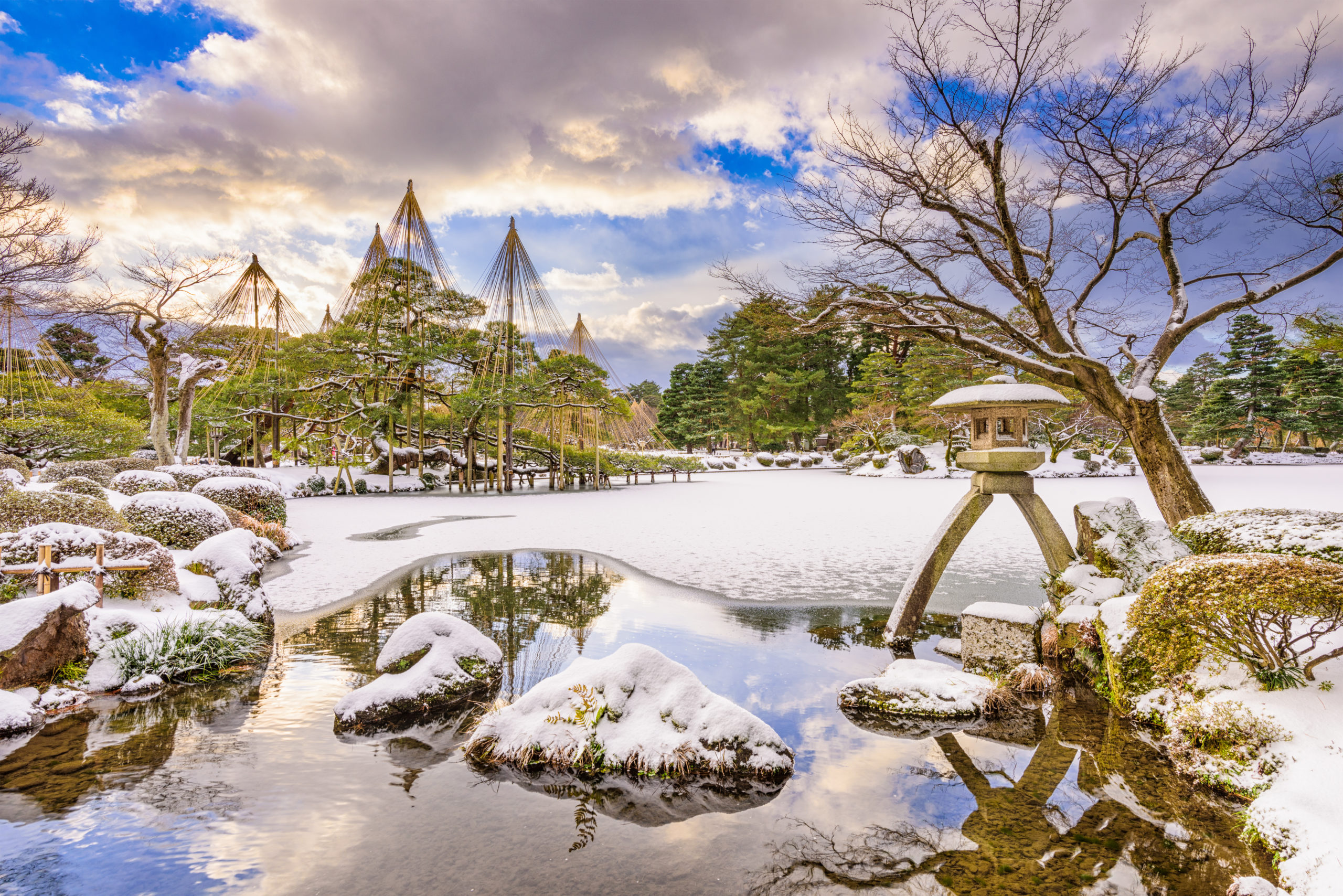
In the Asuka and the Nara period (the 6th century to the whole 7th century), the winding stream garden began to be created due to the popularity of the “winding stream banquet”, which was very popular among the courtiers.
It was a game that puts a flat cup of sake (Japanese wine) in it on the stream, people create poems in a relay form, one has to drink it up if he can’t create one before the cup passes him by.
Pure Land Style Garden – Japanese Garden
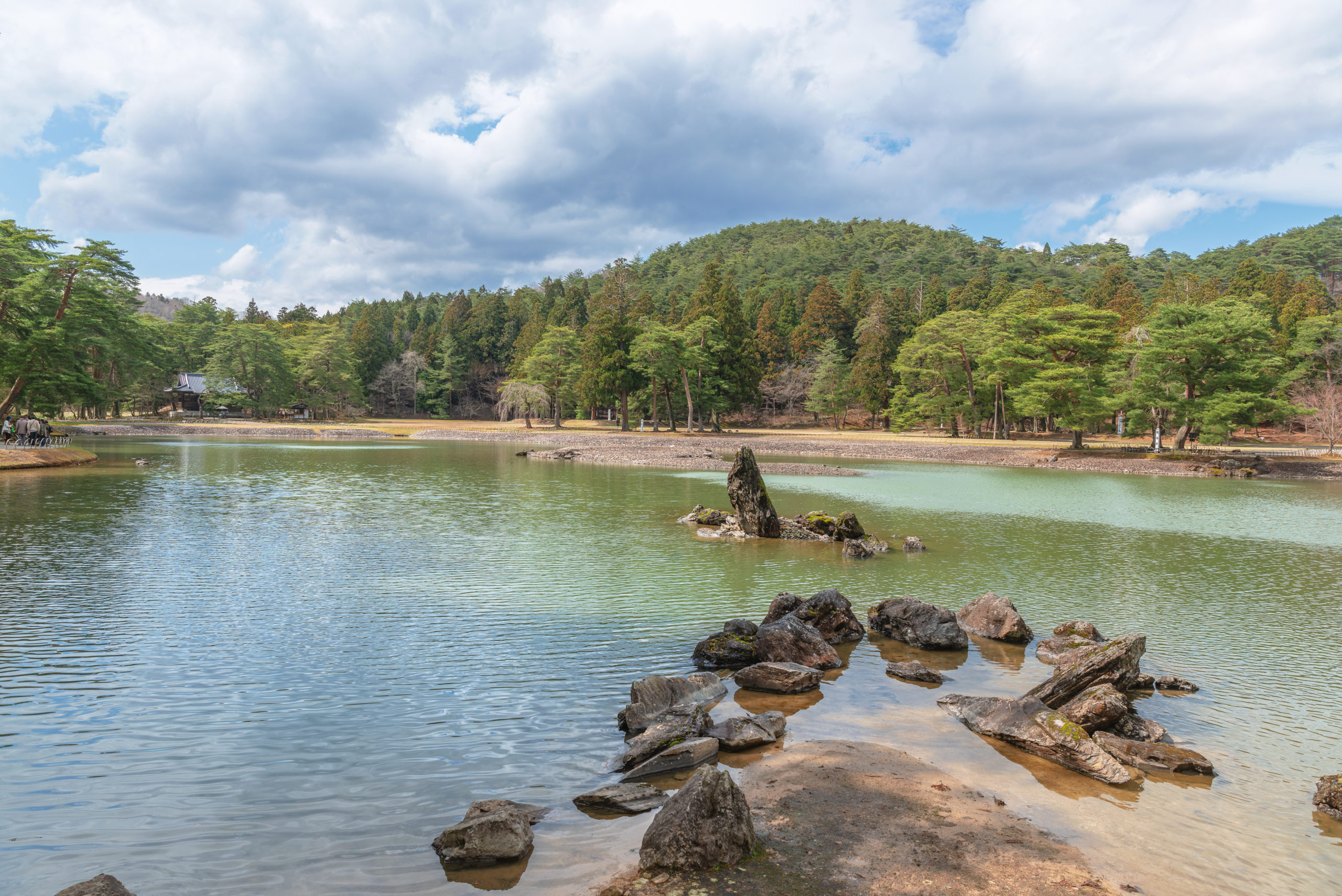
In the Heian period, courtiers created the gardens inside their palatial style houses.
They developed the garden with the pond and spring, including islands, bridges, and winding streams. The gardens were meant for viewing from the path and that is why they never reveal the whole garden’s beauty from one spot.
They must be big enough to enable visitors to walk along the path and spacious at the same time to allow the path to take turns. Sometimes they enjoyed riding on a boat in a pond.
Zen Garden – Japanese Garden
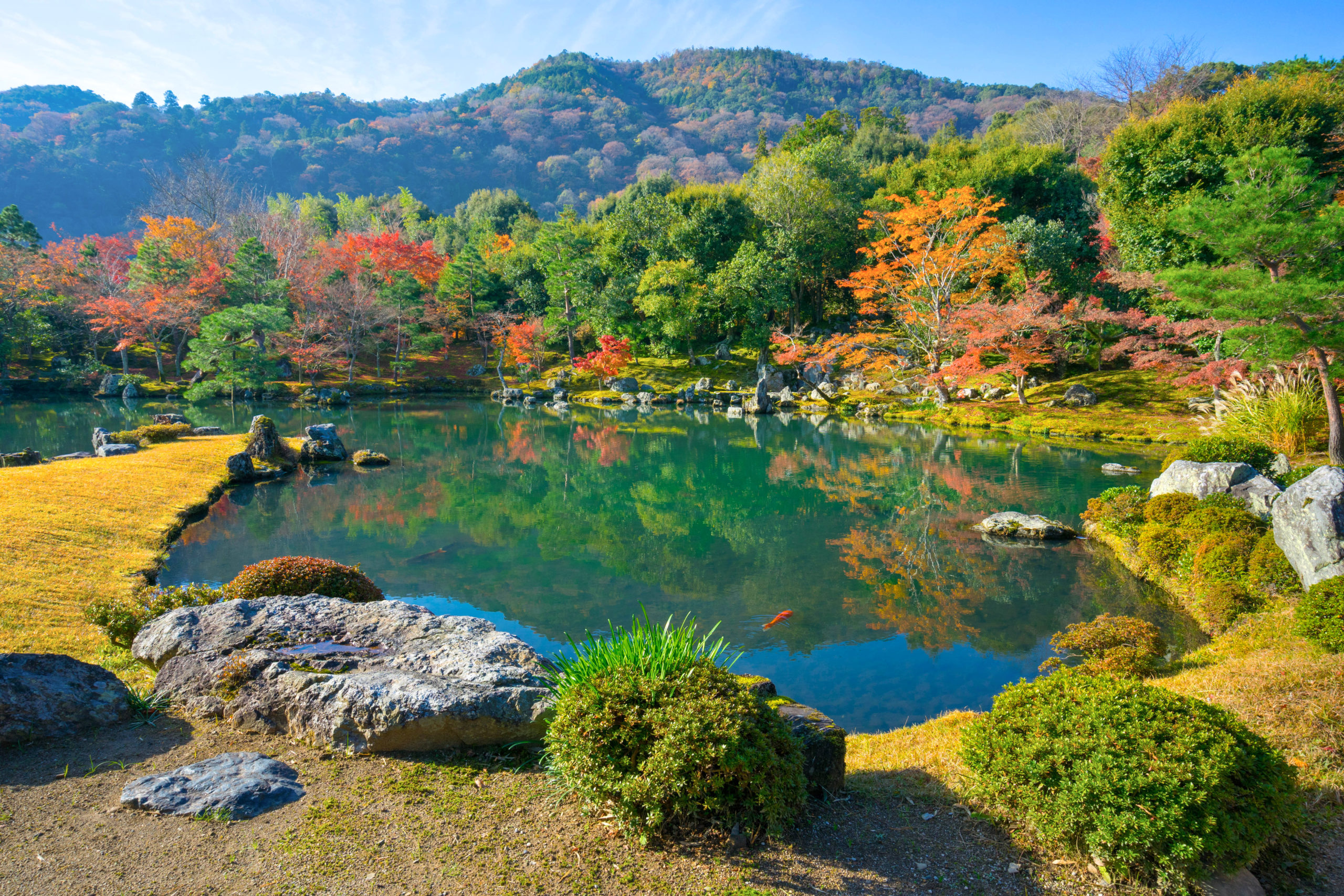
The Zen garden is particularly designed for achieving enlightenment. This type of garden developed in the Muromachi period. We will see the detail of two types of them below.
A Moss Garden
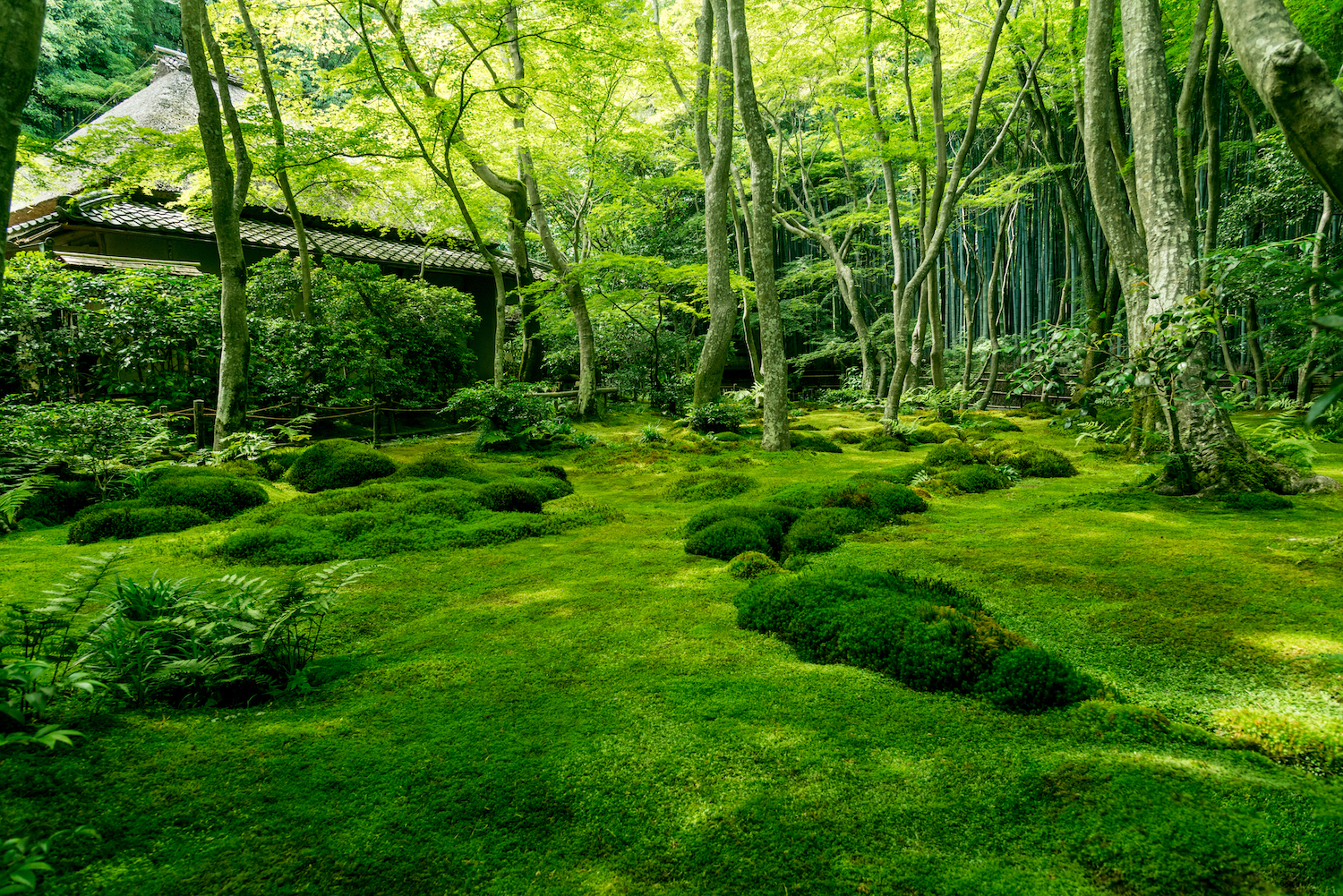
The Moss thrives naturally in humid and rainy climate in Japan. Moss gardens create a soft and a gentle feel, and its green colors calm our eyes and souls.
Muso Soseki, a multi-talented Zen Buddhist monk, was the first Zen garden creator and developed gardens for Saiho-ji Temple aka “the Moss Temple” and Tenryu-ji Temple.
Karesansui – Dry Rock Gardens
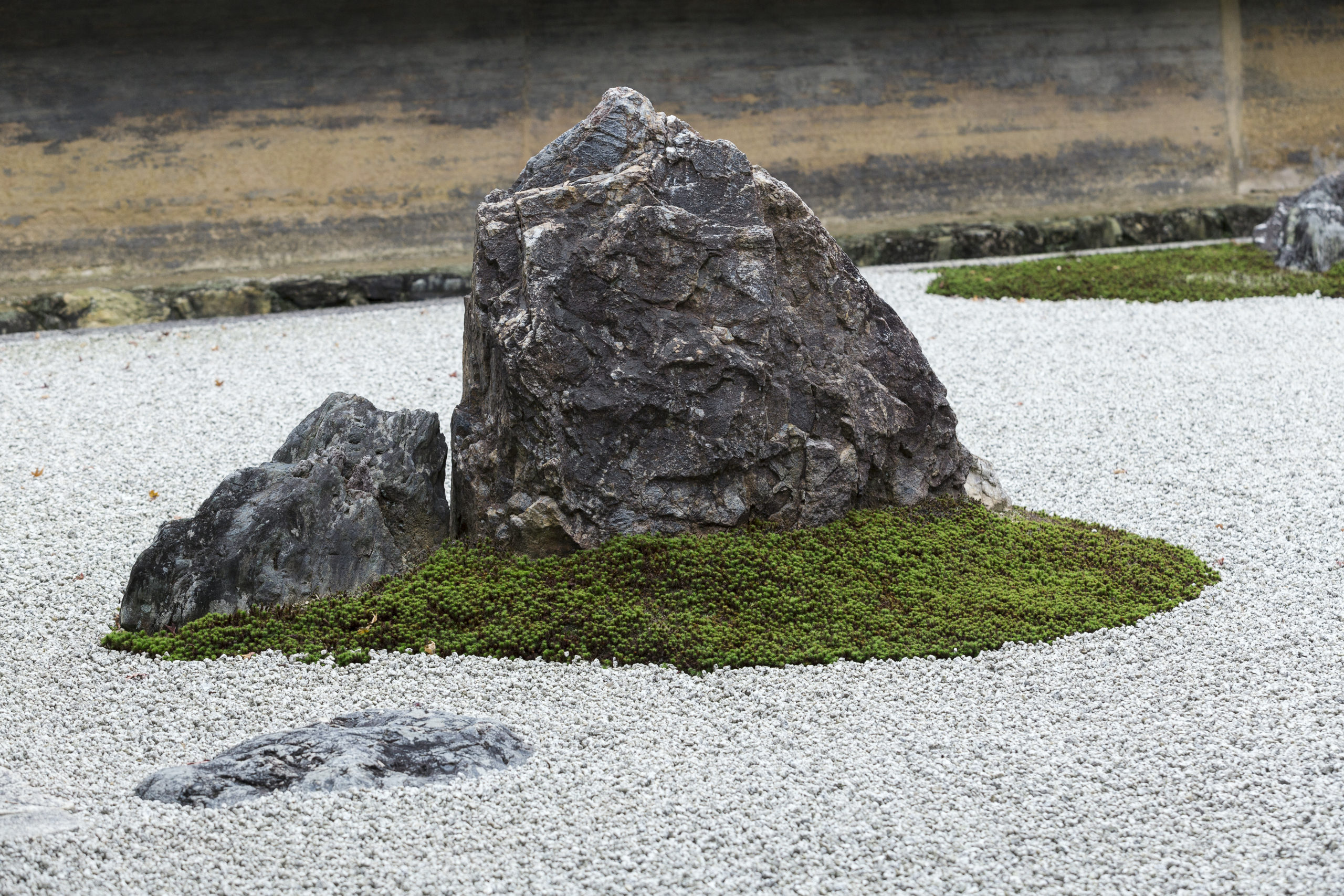
The dry rock gardens are very simple, yet unique and modern-looking, usually placed in a very small area compared to the former gardens.
This style of the garden became pretty popular thanks to the growing popularity of Zen Buddhism. It contains no water element and is designed to portray a scene of mountains, hills, rivers, and islands.
Sand gravel raked into a particular pattern is meant to symbolize the waves in the river or the sea, while rocks placed the sand symbolizes mountains.
They reproduce natural landscapes in a more abstract way by using stones, gravel, and sand onto mountains, islands, and rivers. They refer to the Zen philosophy and usually try to evoke a deeper meaning.
You find Karesansui gardens not only in the Zen temples but also in shrines and houses. This is because its compact size fits the bill.
The motifs created by rocks, stones, and gravels are not confined to natural surroundings such as mountains and rivers, but also some thoughts, specific places, legends or abstract designs.
Tea Garden Roji – Japanese Garden
As the name suggests, they are designed for the tea ceremony.
Chado: “The Way of Tea” Cultivates Hospitality and Zen Spirit
In the Azuchi Momoyama period (1573-1603), the time that powerful feudal lords began to create their own tea houses, the tea gardens were born along with it.
Japanese Tea House: Architecture of Ultimate Spiritual World
They contain a tea house where the ceremony is held and a stone basin where guests can purify themselves before participating in it. The path with stepping stones is a common sight, which leads the guests to the tea house.
The Tea Garden has a very intimate atmosphere and is meant to provide a moment of meditation for the guests.
Feudal Lords’ Gardens – Japanese Garden
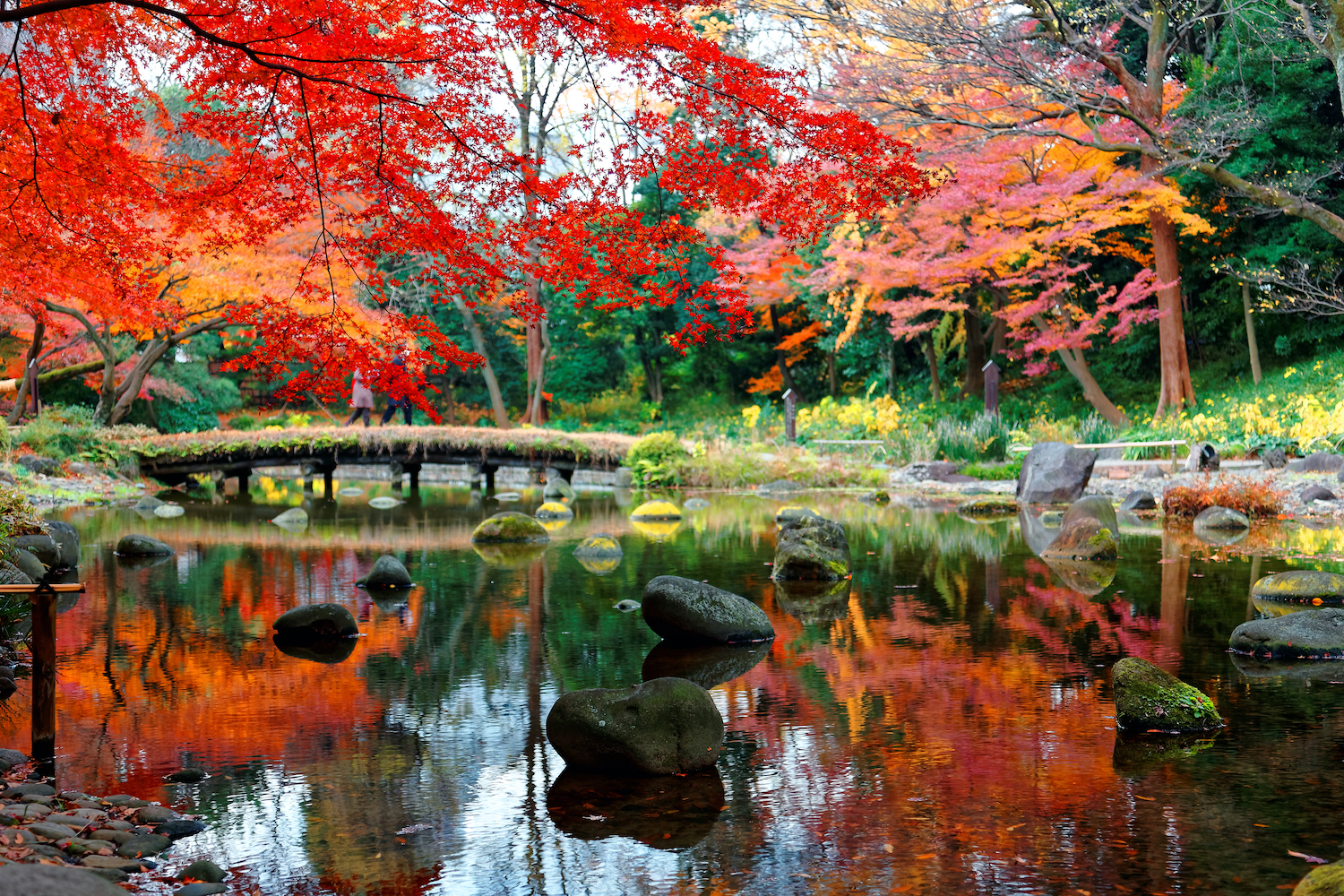
After the long time of warring states, people began to enjoy a sense of peace during the Edo period (1603-1868). Many feudal lords competed for their prominent gardens. Most of them are large enough to include a tea house, bridges, and gazebos.
We can say this is the grand sum of the traditional Japanese gardens. It adopted various elements of gardens in the past.
This is the period when common citizens began to have their gardens at home. The gardening culture flourished, more than 200 gardening books were published.
Professional gardeners were growing plum trees, cherry blossoms, camellias, and morning glories and they became pretty popular among people.
Japanese Garden Design Elements and Principles
Almost all the elements indicate some kind of symbolism, which makes it interesting to watch the Japanese garden.
The design principles are see-through once you look at its elements.
Overall, the designer creates the micro Cosmo, let us enjoy exploring his garden like solving a mystery.
Stones
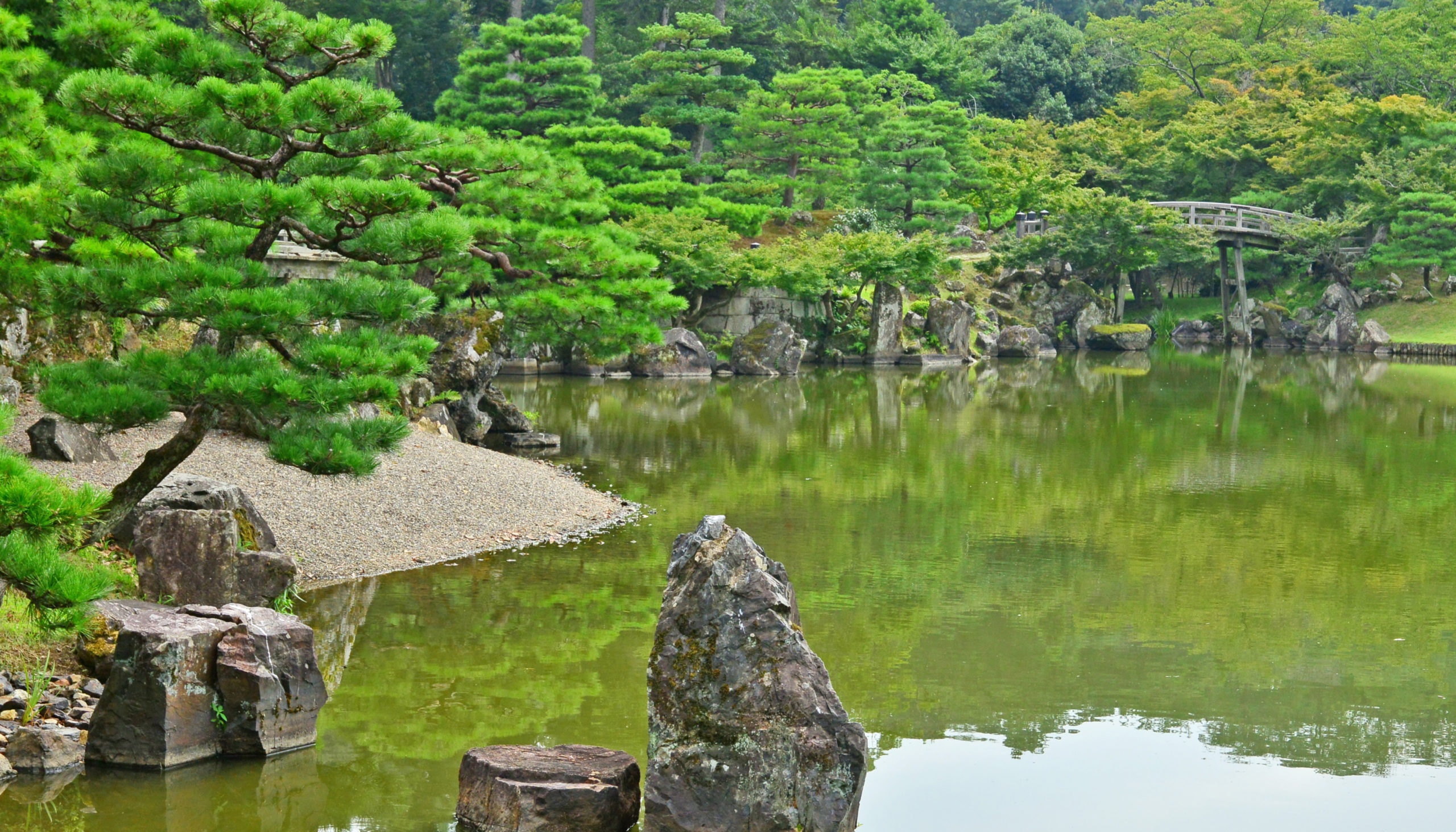
In ancient Shinto, large rocks and stones were revered as kami (deities).
In the course of time, other elements would come into the picture, however, merely setting stones meant a very basic garden at the beginning.
Japanese gives stones much meaning according to its shapes, such as Funaishi (ship-shaped rock) and sharp-shaped rocks are resembled to be Horai Island where it’s believed that immortal mountain wizards reside in Taoism.
When the rock is set on a pond, it means it’s an island, when it’s set in the shallows, we assume it as a rough coast. So we read a designer’s mind by seeing its shape and where it is located.
In the Dry Rock Gardens, raked gravel resembles water as streams showing us the flow of the river or waves of the sea.
Islands
When constructing a Shinto shrine, they created a pond and an island in it to worship kami (deity).
The size of the islands varies from the single stone outcropping to large islands big enough to support building and trees. They often carry religious symbols such as turtles and cranes for longevity.
Water
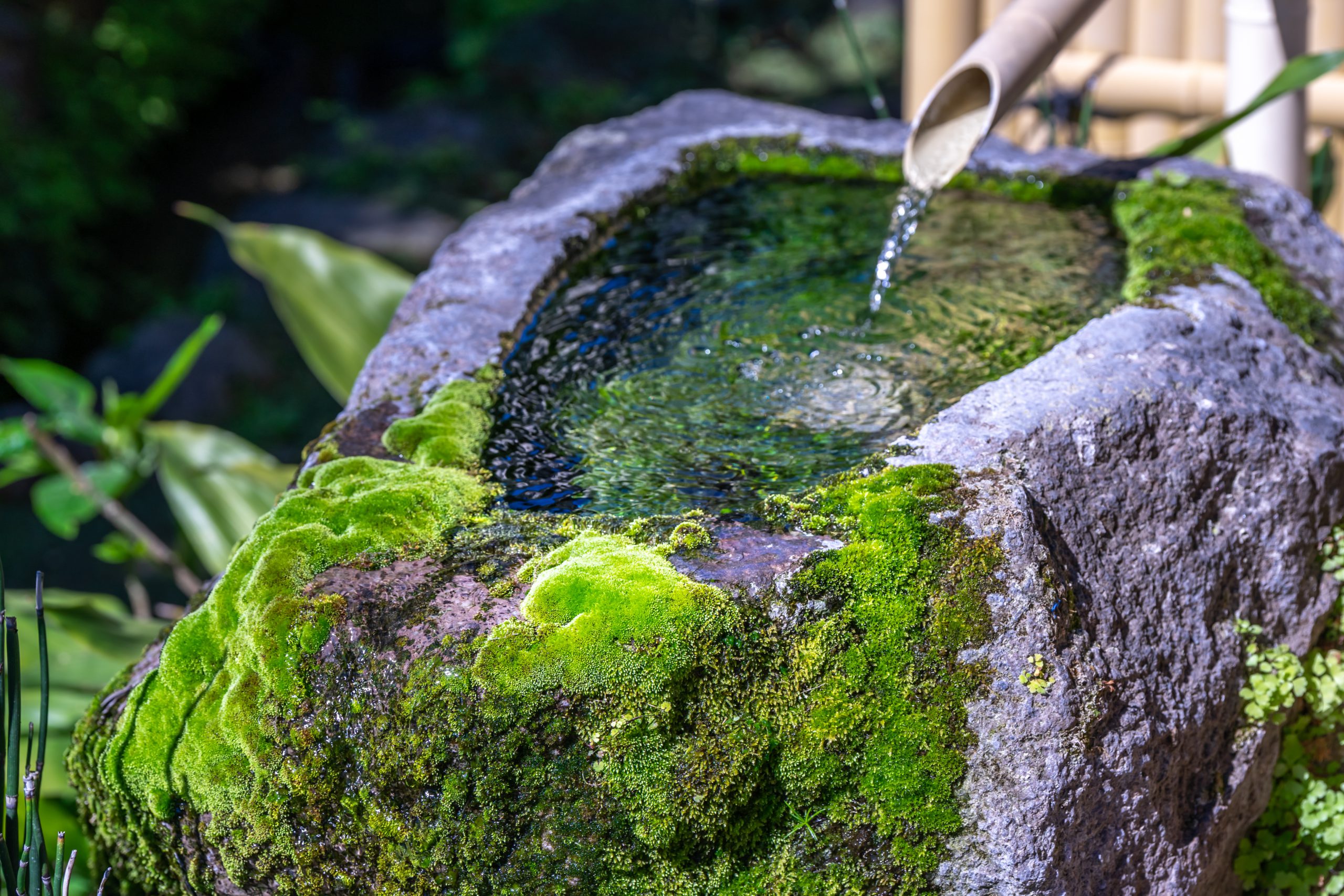
The sound of running water can have a calming effect and mask traffic noise, perfect for this meditation garden.
In the traditional Japanese garden, it contributes to the expression of nature and symbolizes renewal, wonder, and continuity.
You see water basins often, especially in the Tea Gardens.
Lanterns
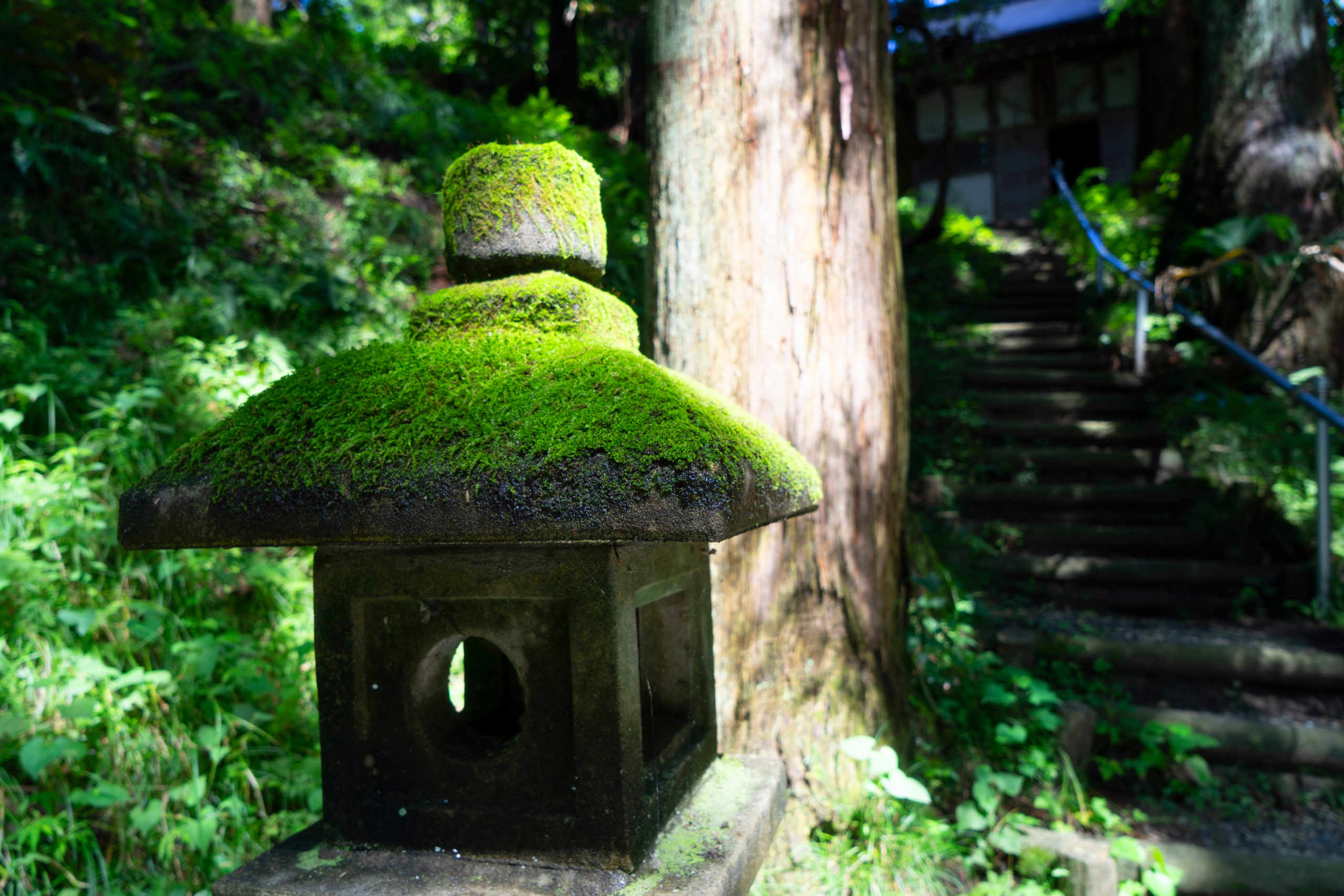
They are usually made of stone and placed in carefully selected locations.
Originally, intended to guide the visitors during nocturnal celebrations, its light was also considered as the light of knowledge clearing away the clouds of ignorance.
Often paired with the water basin, other elements of the Japanese garden especially for the tea ceremony.
Flowers and Plants
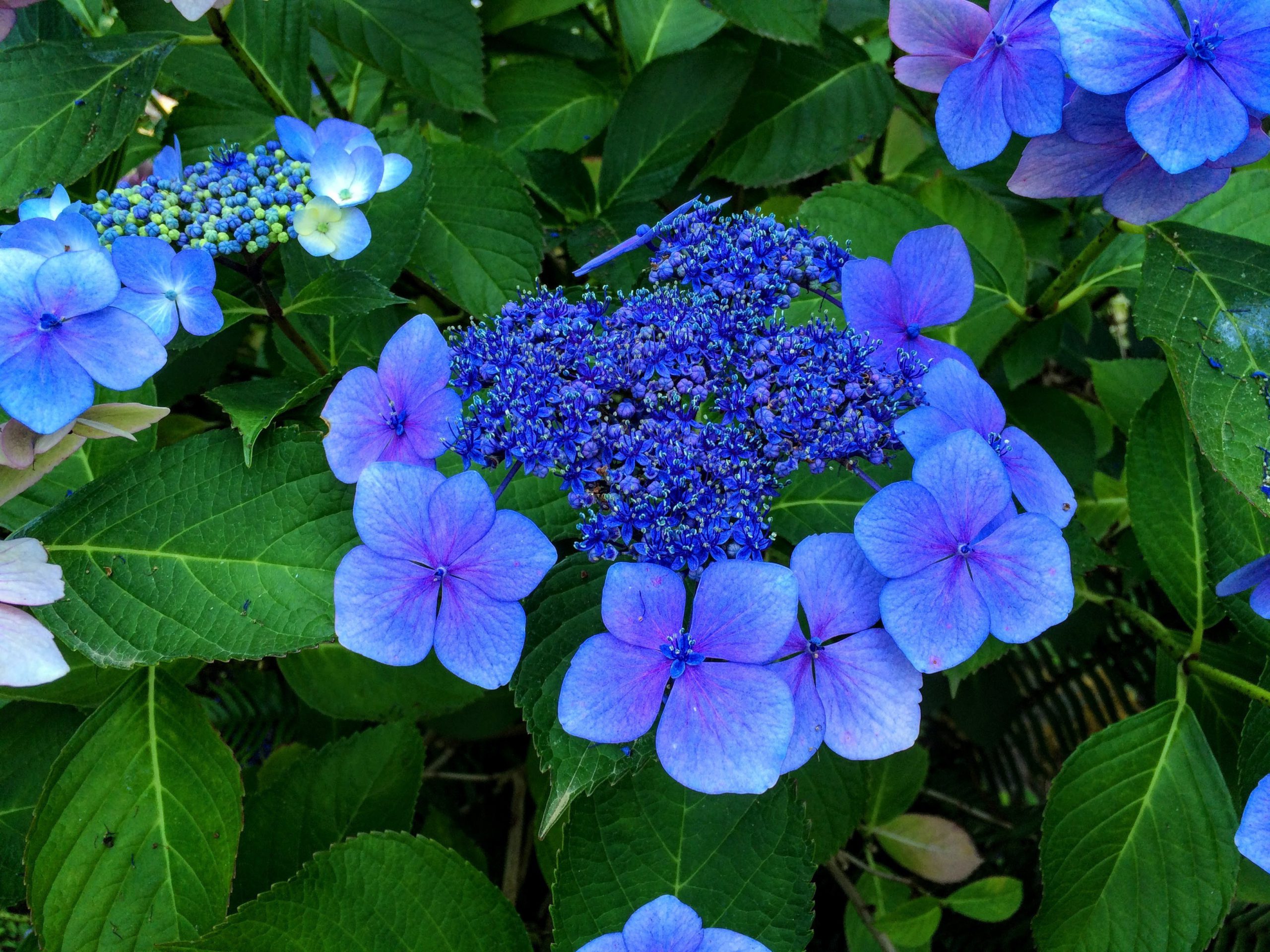
Plants play a truly important role in the Japanese garden as well as Western ones. Each plant tells us the season and its colors adds a nice change to the garden.
Each of them has been loved and symbolized for a certain thing.
Here we will look at a few plants in the traditional Japanese garden.
Plum Trees – Ume
Although the cherry blossoms gained popularity almost as the symbol of Japan, cherry blossoms used to be people’s favorite trees. There are a lot of Japanese family crests of plum flower motifs.
Japanese Family Crest: List of the Lineage Symbols
Pine – Matsu
One has to prune them regularly to keep them in shape in harmony with the surroundings. It is a common tradition to hire a professional gardener to keep them in a neat condition if one has a relatively large garden.
The Matsu symbolizes perpetual youth and longevity due to its long life-span.
Rhododendron – Tsutsuji
It’s the common sight you find well-taken care of Rhododendron of the traditional Japanese gardens. In springtime, they blossom with vivid reds, purples, pinks, and whites radiating its beauty.
They symbolize fragile and ephemeral beauty.
Shrub Peony – Botan
Huge varieties of peony cultivars have been obtained by hybridization since its introduction from China to Japan in the 8th century.
We can enjoy their gorgeous beauty in late springtime just for a few days. They require considerable care and symbolizes prosperity.
Japanese Maple – Momiji
It’s quite a sight to behold when we find them in autumn. Their vivid red colors catch our eyes pleasantly and tell us we are in the harvest season.
Borrowed Scenery Shakkei
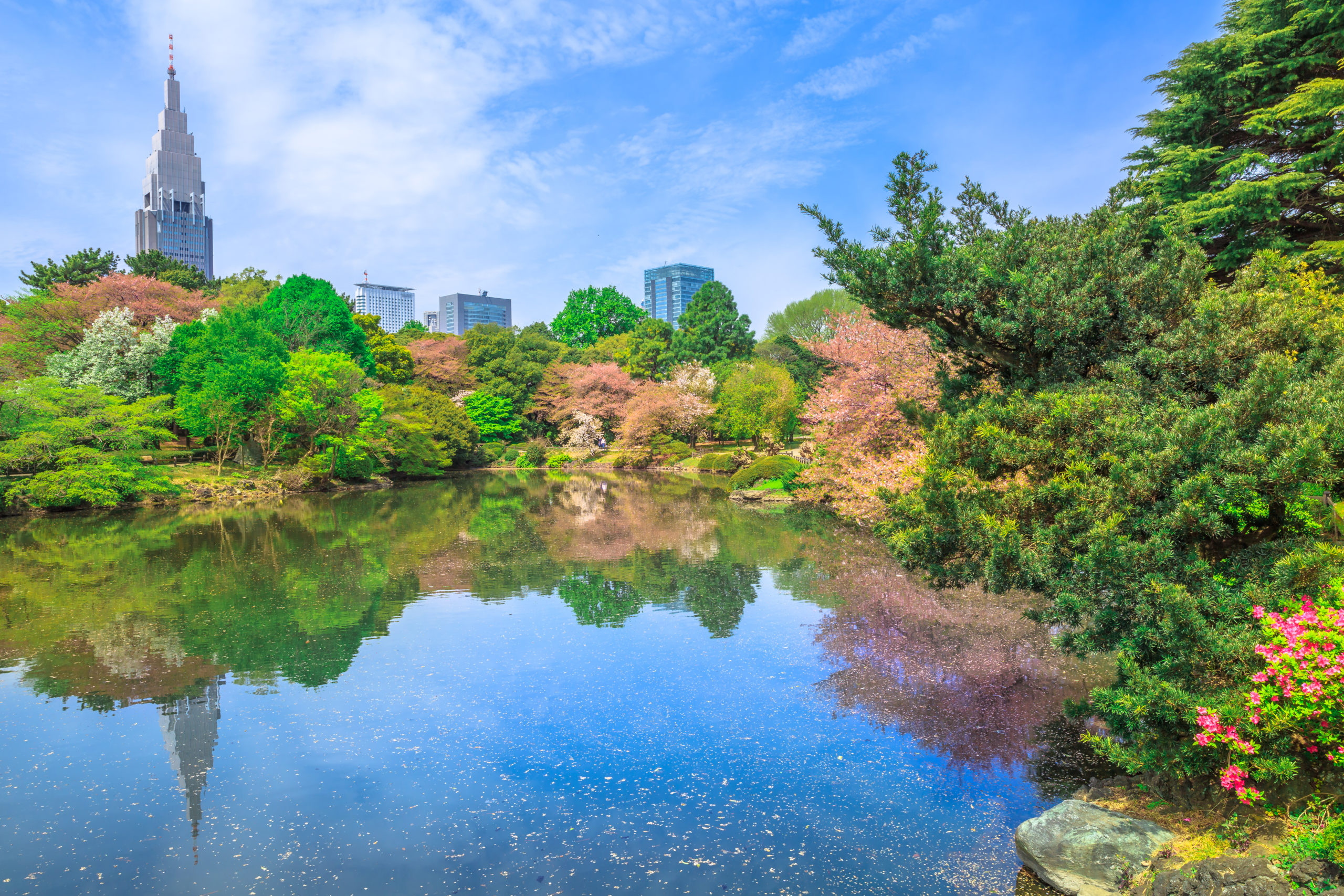
It’s one of the techniques of the traditional Japanese gardens. By incorporating the scenery such as mountains, bamboo forests outside the garden, it makes possible to expand the world of the garden and to produce a dynamic view.
The borrowed scenery can be man-made objects like castles and in modern times, skyscrapers have become unintentional scenery for some gardens in the cities such as Shinjuku Gyoen.
Comparison of the Japanese Garden and the Western Garden
For a better understanding of it, we will look for the difference between the Japanese garden and Western-style gardens.
Of course, there are many variants in each style, however, we can assume there are some distinctive characteristics between the two.
Here we will list up the principles and characteristics, we will have a clear understanding of it.
Western Style Gardens
The beauty of the Western-style garden lies in its symmetrical beauty except for the natural scenery style garden, which emerged in the early 18th century in Britain.
They are independent of the buildings, but stand on its own and geometric patterns by conscious manipulation, create artificial order, which reminds us of the power of the human.
Japanese Style Gardens
On the contrary, the Japanese style garden has its base on mother nature and keep in harmony with nature, yet to consciously manipulate them to create the ideal garden.
They find beauty in asymmetry. Either in two-dimensional or three-dimensional relations, place materials to make a scalene triangle. This method is seen in “Kado” (Japanese Flower Arrangement) as well.
Ikebana: Styles of Japanese Flower Arrangement “Kado”
For instance, placing the smaller height plants in front and taller ones on the back gives a sense of distance and depth. Overall, you can say the Japanese style garden pursues to create three-dimensional space from relatively small spaces.
What we have to consider in terms of creating Japanese garden is you have to take care of them often. Especially in summer, you may have a hard time getting rid of unwanted grasses.
However, that can be a positive point that you can co-relate to your garden and the more you take care of them, the better your garden responds to you.
Japanese Garden Pictures for Your Inspiration
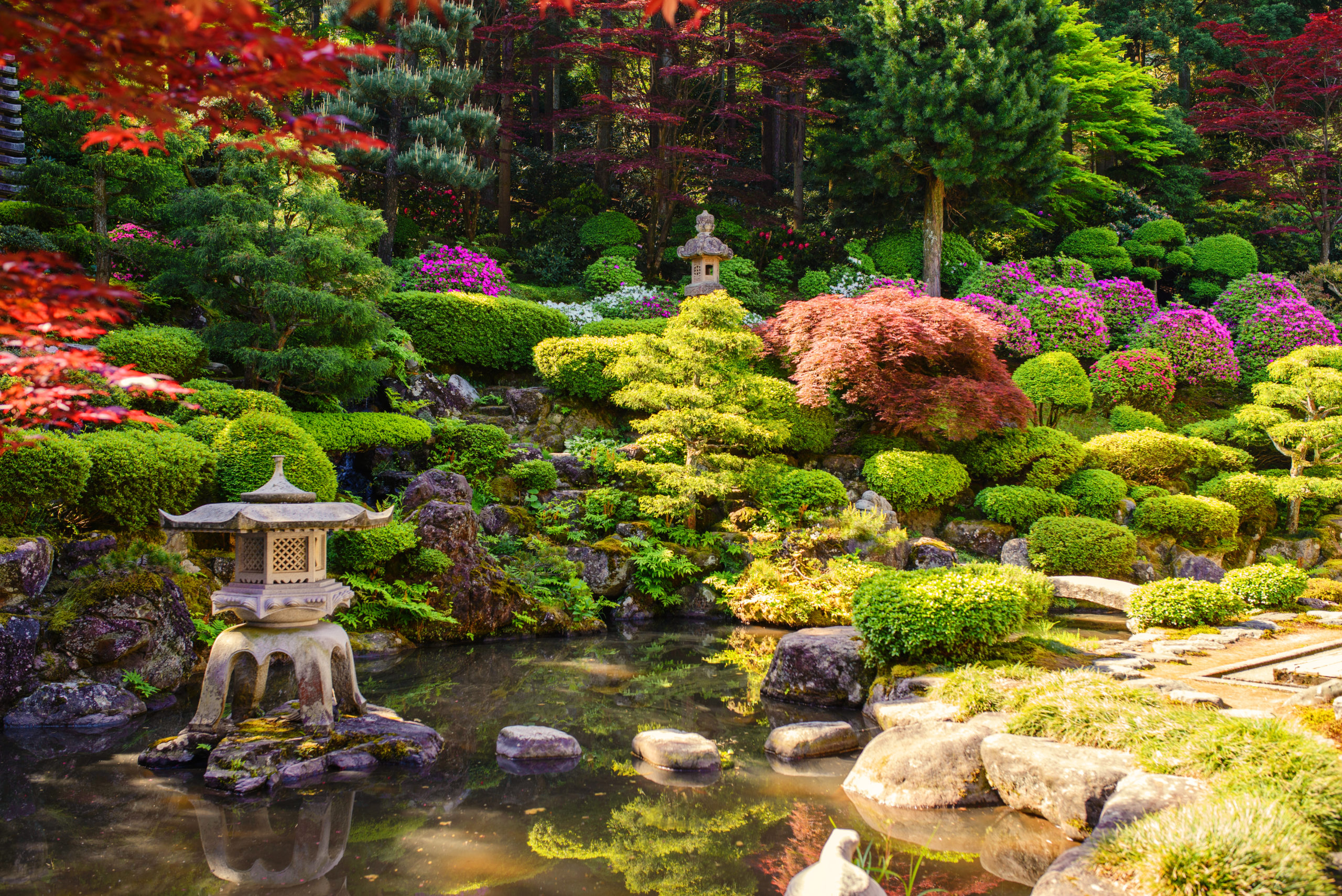
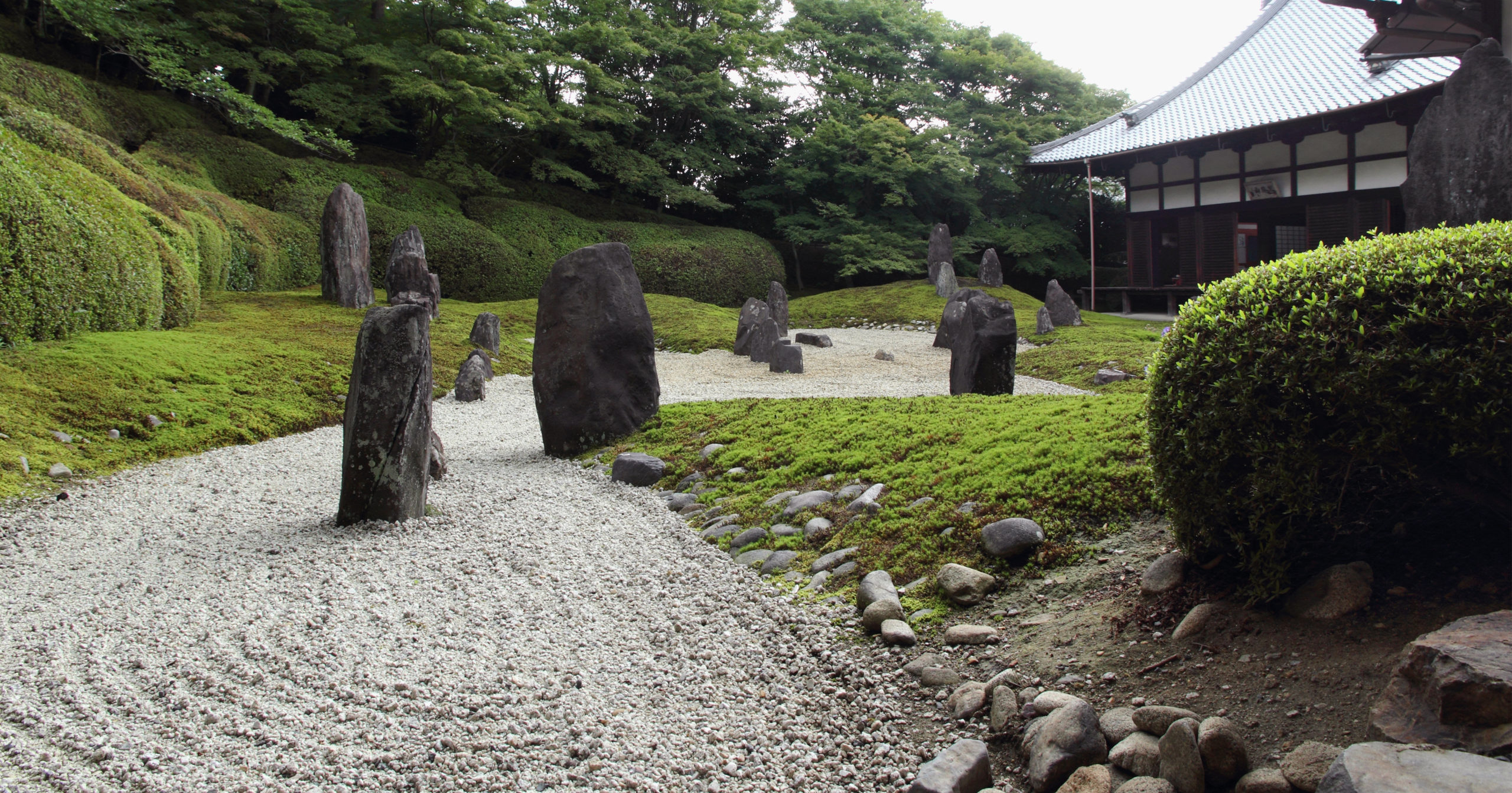
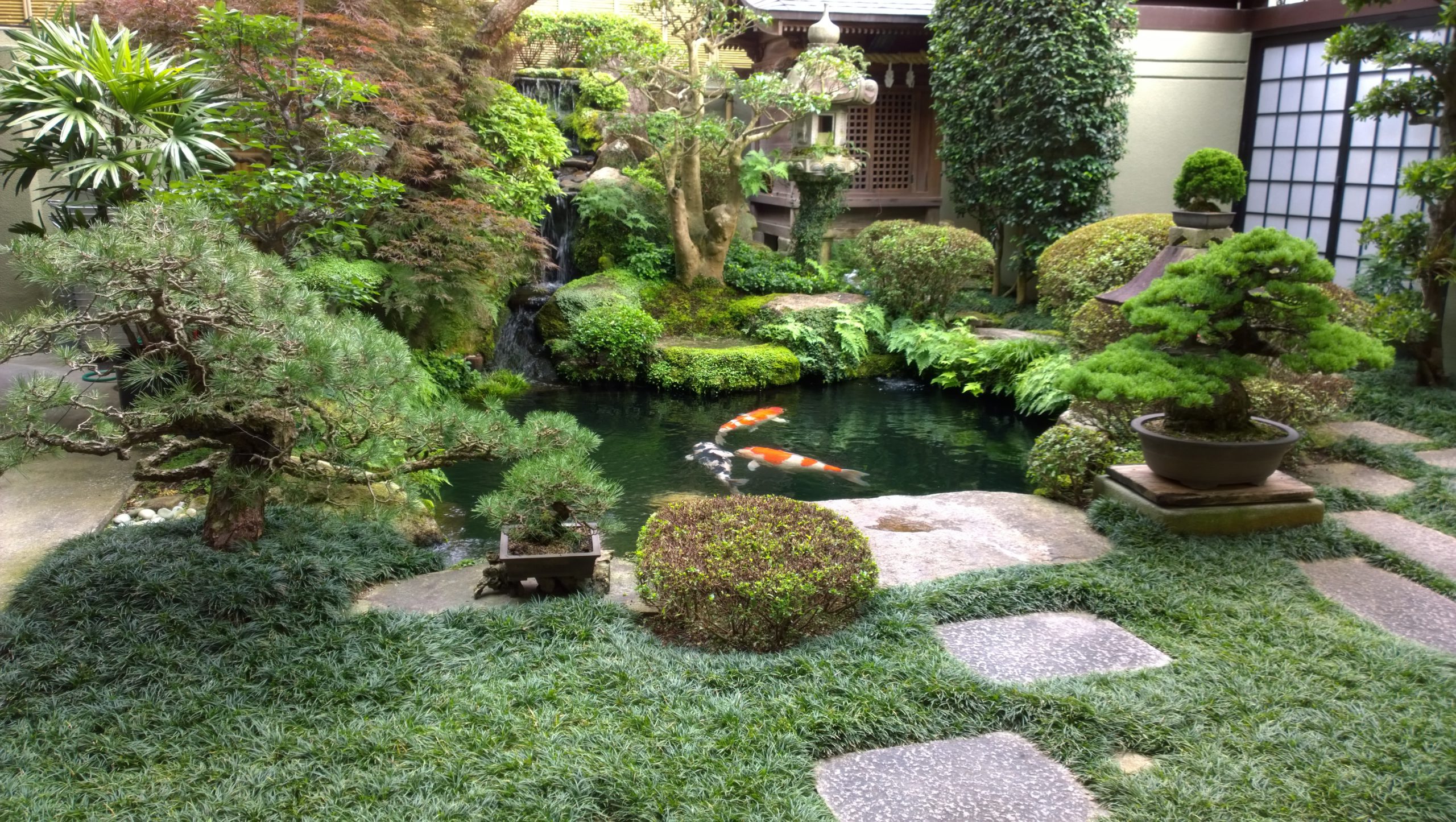


References
日本庭園の特徴 (Traditional Japanese Garden Styles)
池泉?庭石?わかると楽しい!日本庭園の特徴・様式の基礎知識 (Travel.jp)
日本庭園の起源 (okayamakajyu.com)


